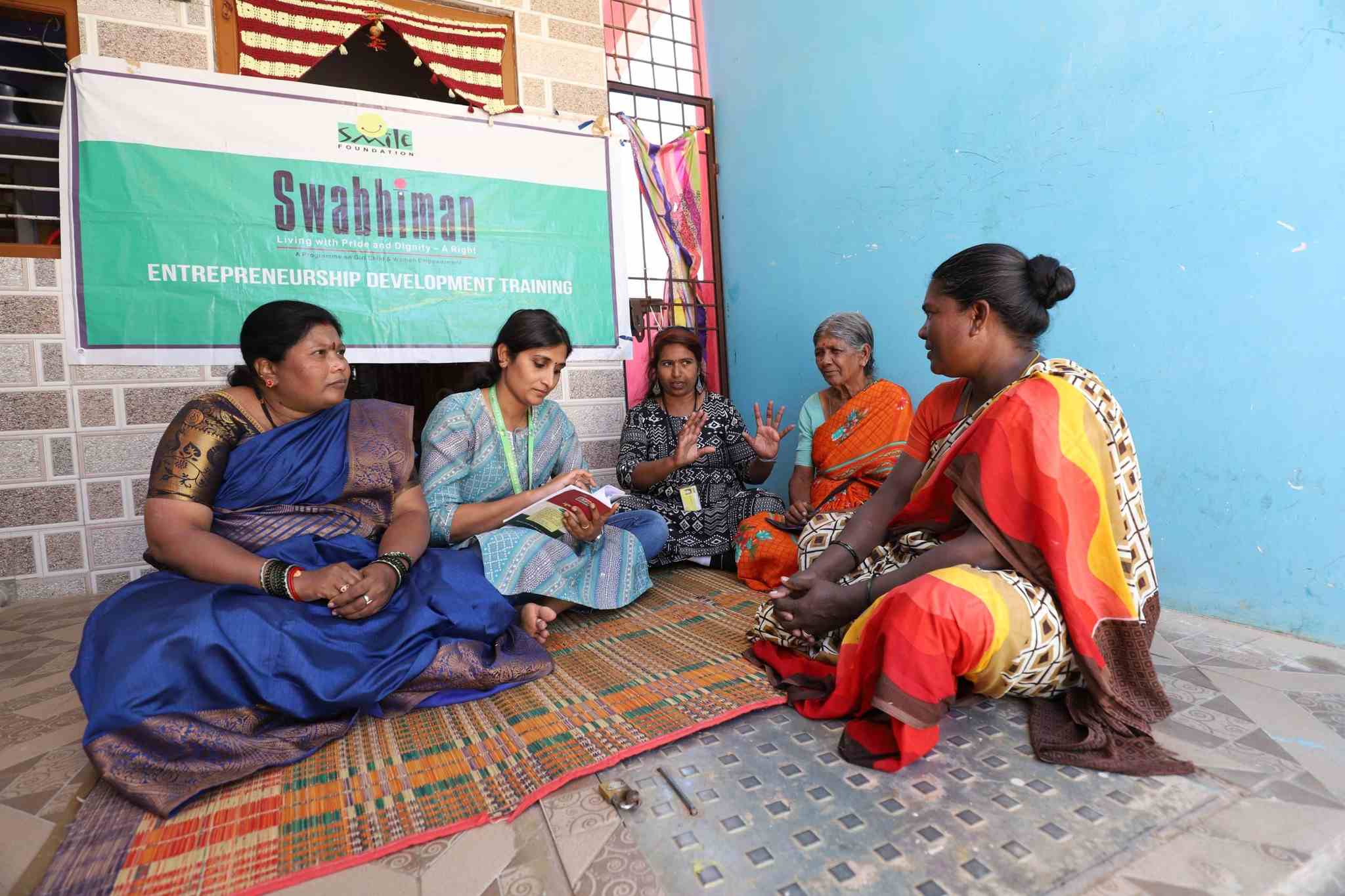Seema is a daily wager, one of the very few women from her village who works on the farms alongside men. The 24-year-old supports her family of four, including her husband and two young kids, ever since her husband developed an ailment that has not been diagnosed yet. Every day, she wakes up, cleans the house, cooks food, takes care of all the chores, and then goes to work on the farm, only to return at night and again do household work.
Even before she started working on the as a daily wager, Seema took care of all the tasks at home. On the farm, she gets paid INR 300 per day, a hundred rupees lesser than the men. She does the same work, puts in the same number of hours, and yet she is paid less than the others just because she is a woman.
Her story is also the story of millions of women across the globe as the persistent gender pay gap remains a concern. Despite progress, women continue to earn less than men across various occupations and industries. For every dollar a man earns, on average, a woman is paid only 54 cents. This problem has been highlighted on several occasions and remains unresolved. Especially in a country like India, where a large chunk of the workforce is employed in unorganised sector, this unfair pay gap is a major problem. So why do women often find themselves in low-paying jobs?
Occupational Choices
What comes to your mind when you hear the word nurse? Is it a woman that you picture or a man? It is highly likely that you think of a woman when you hear that word.
Similarly, when you hear the word pilot, what do you imagine? A man or a woman dressed in a pilot’s uniform? We carry many biases and stereotypes when it comes to gender and these stereotypes are strongly embedded in our way of thinking about the occupational choices for both men and women.
Often, women are seen to be more fit for occupational choices like teaching, caregiving, administrative work, etc. On the other hand, men are viewed as leaders working in more technical jobs. Even AI tools like ChatGPT have been observed to perpetuate these gender biases when it comes to professional choices. These gender differences in occupational choice contribute to the overall pay gap.
Industry and Sector Bias leading to women in low-paying jobs
Another factor is the industry or sector of economic activity. Men are more likely to work in manufacturing, which tends to offer higher earnings. In contrast, women are often employed in educational services, where pay is considerably lower. This occupational segregation perpetuates the wage disparity. Even when we look at large corporations, we will find that there are more men in leadership positions and fewer women. The gap is so big that it may take years to achieve any form of equality in this area. Women in low-paying jobs also means that India not doing well in its Sustainable Development Goals.
Social Norms
There are innumerable societal norms and stereotypes that restrict women from achieving greater success in the professional field. In India, the problem is even bigger because of the social evils like dowry, early marriage, etc. Often, boys in a family are given preference over girls to study and build their careers because they are seen as the breadwinners while girls are trained for housework.
Historically, women have been associated with caregiving and domestic work. These roles, often unpaid or underpaid, have spilled over into the labor market. Additionally, biases persist regarding women’s abilities, leading to lower expectations and, consequently, lower pay.
Negotiation and Self-advocacy
Studies show that women tend to ask for less pay than men during negotiations. It may be because of various reasons, like the discrimination faced in the workplace, the lack of confidence because of the overall disparity, or the domination of men in leadership roles. This willingness to accept lower salaries contributes to the overall decline in wages when women enter certain fields. Encouraging self-advocacy and negotiation skills can help address this issue.
Maternity, Period Leave and Career Breaks
The debate around period leaves for women created a furore in India in the last few years. Many argued that this will be harmful for women as employers will choose to not hire women because of this likelihood of giving them extra leaves.
Apart from this, a stigma is attached with maternity leaves even after they are legally mandated. It is also women who pay a higher price for any career breaks. The stereotypes are so deep-rooted that some reports suggested employers preferring to hire less women employees in the aftermath of Me Too Movement. All this shows that women have faced a tough situation and have to work harder to prove their worth in workplaces, sometimes having to neglect their physical and mental wellbeing. This also adversely affects their pay scale as compared to men.
Case Study: Indian Garment Industry and women in low-paying jobs
The Indian garment industry employs a large number of women. Despite their significant contribution, women’s wages remain low. Factors such as piece-rate payment systems, lack of bargaining power and limited access to formal education contribute to this disparity. In this industry, women are in low-paying jobs.
Most of the home-based garment workers operate from the confines of their houses, transforming living spaces into makeshift workshops. They are often subcontracted to perform specific tasks like sewing, embroidery or finishing. However, these workers receive meager piece-rate payments, which depend on the number of items produced rather than the hours worked. Also, majority of these workers are women who do this part-time work while managing their households.
Pay for skills, not Body Mass Index (BMI) – Against women in low-paying jobs
So what can be done to address these issues? India needs comprehensive policy reforms to safeguard the interests of women. There needs to be a stronger focus on eliminating this pay gap and bringing greater parity in workplaces.
While the formal sector can be easily regulated, what’s needed is a mechanism that can create the right conditions for women in the informal sector as well. This needs to be achieved while also ensuring that employers do not begin to hire lesser women for work because of these changes.
The policies should focus on promoting gender equality, investing in skill development and creating safe and inclusive work environments. Organisations, government bodies and civil society must collaborate to bridge the gender pay gap and uplift women in the workforce.










